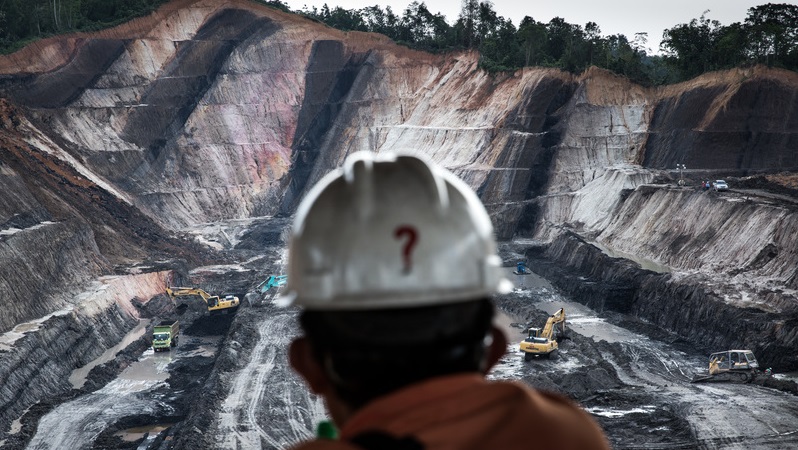There is a vicious cycle between fossil fuel reliance and debt, which helps explain why so many oil exporters are heavily indebted
As host of the G20 summit last weekend, Indian prime minister Narendra Modi was right to highlight the importance of debt relief.
But he and other G20 leaders could have done more to recognise how economic reliance on fossil fuels has made debt crises worse.
National debt burdens have reached catastrophic levels in over 50 countries. Sri Lanka, Ghana, Zambia and Pakistan are already restructuring their debt or negotiating bailouts to save their economies.
The current debt crisis did not emerge because governments mismanaged public finances.
Why India is rebuffing a coal-to-clean deal with rich nations
Most developing countries have been forced into borrowing by external shocks: the Covid-19 pandemic, soaring energy and food prices, and climate-related disasters such as floods, droughts and cyclones.
That debt has been made more costly by rising interest rates and a strengthening US dollar.
Consequently, dozens of countries are sacrificing spending on health, education, or infrastructure in order to repay their creditors. Investments in tackling climate change are also at risk.
As a result, both creditors and debtors are exploring how debt repayments could be paused after climate disasters, or re-directed towards advancing climate goals.
However, few of the initiatives have tackled the way that the debt crisis incentivises oil and gas production, jeopardising the fossil fuel phase-out necessary to limit global warming.
Vicious cycle
Many of the countries facing debt distress have significant oil and gas reserves, whether low-income countries such as Chad, Mozambique and Papua New Guinea, or middle-income economies such as Angola, Egypt and Tunisia.
The relationship between abundant fossil fuel reserves and rising debt is no coincidence.
Oil and gas exporters can increase borrowing when energy prices are high. High prices increase the value of their reserves and thus boost their credit ratings, enabling these countries to borrow cheaply in international debt markets.
However, oil and gas exporters may also increase borrowing when energy prices are low. Many fund their public services using oil and gas revenues and do not want to impose cuts on their citizens when those revenues decline – so they borrow to close the gap.
New research from ODI, a global affairs think tank, reveals that oil and gas producers are likely to increase borrowing whether energy prices are rising or falling.
Consequently, many are seeing their debt stock balloon. Over the last decade, oil-rich countries such as Angola, Congo-Brazzaville, Gabon, Mozambique and Venezuela have all seen gross debt as a percentage of GDP grow over 50 percentage points.
Soaring debt increases a country’s reliance on fossil fuel exports to repay its creditors. It is politically difficult and considered fiscally irresponsible to cut oil production when oil revenues are needed to service debts.
Indeed, the debt crisis also incentivises an expansion of oil and gas production to increase export revenues, meaning countries can borrow even more against their larger oil and gas exports. Thus, a vicious cycle of indebtedness and fossil fuel production emerges: higher debt spurs increased fossil fuel production that enables more and more borrowing.
Not just more debt, but worse debt
Not only are fossil fuel producers borrowing more relative to GDP, but ODI’s analysis finds that they are turning to more expensive sources of debt – especially private creditors.
Over the last decade, Bolivia increased its borrowing from private creditors 85-fold, while Chad saw a 75-fold increase. Papua New Guinea, Ecuador and Mozambique saw their debt to private creditors increase 10-fold. All of these countries sit on significant oil and gas reserves.
Larger debt burdens coupled with higher interest rates mean that more and more of a country’s foreign exchange earnings must go towards repaying its creditors.
As a result, much of the revenues from oil and gas exports simply go towards debt servicing. Countries therefore become dependent oil and gas production, as any decline in export revenues has to be offset elsewhere in public budgets.
The global debt crisis therefore incentivises more fossil fuel production.
How can the vicious cycle be broken?
Many developing countries now need debt relief. But while debt relief will provide a temporary respite, it will not change the underlying financial incentives that spur fossil fuel extraction.
Additional reforms are needed so that it is cheaper for oil and gas producers to borrow for green purposes than grey ones.
International public finance can have huge influence over energy markets in smaller and poorer countries.
The G20 and multilateral development banks therefore need to end their funding for fossil fuels.
While many governments have promised to align their international public finance with a 2°C world, the G20 still provided $55 billion for fossil fuels between 2019 and 2021, compared to just $29 billion for r
Read More

